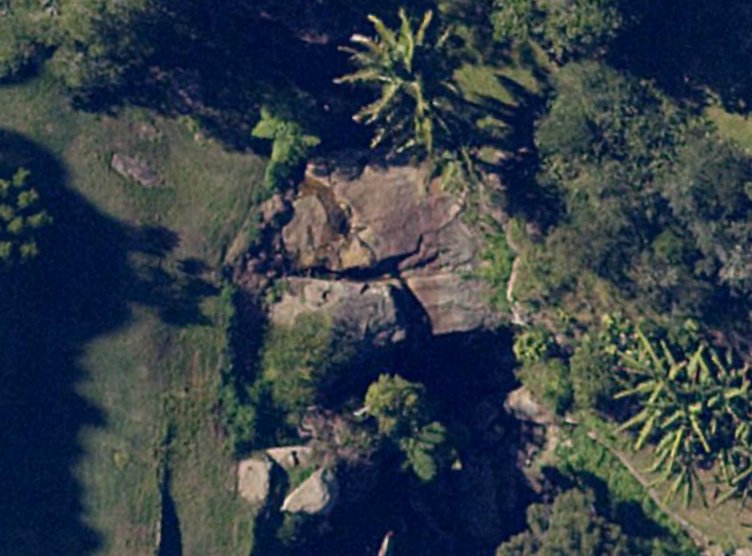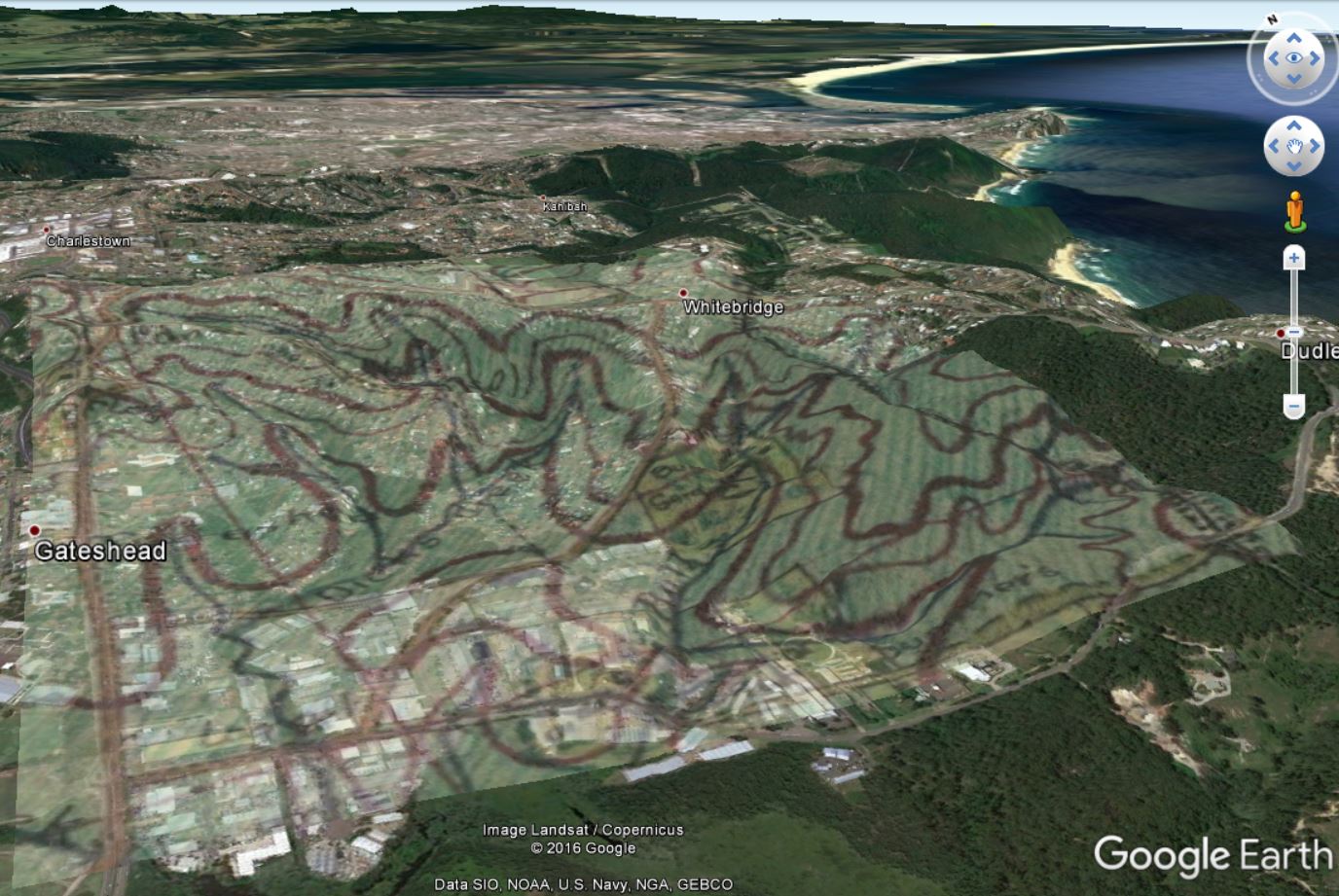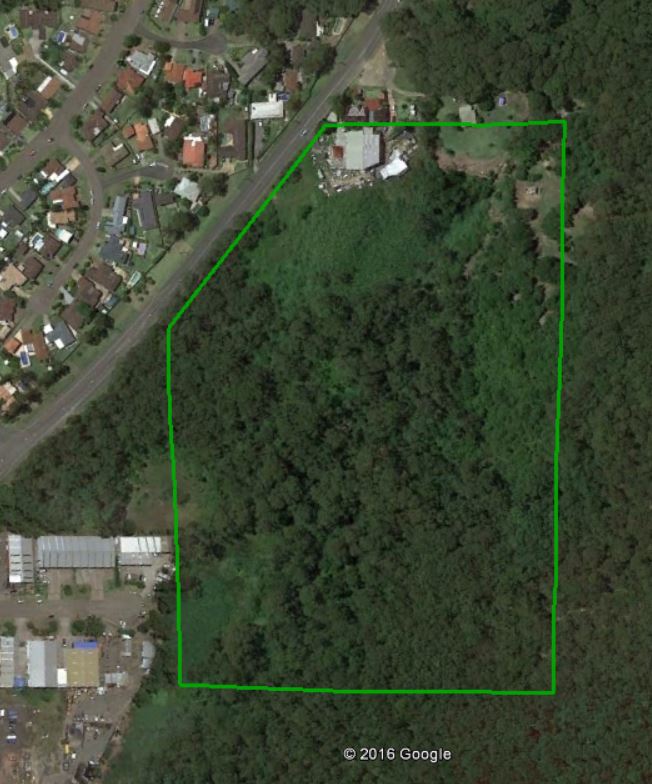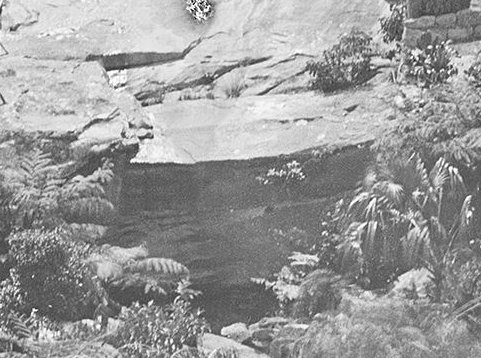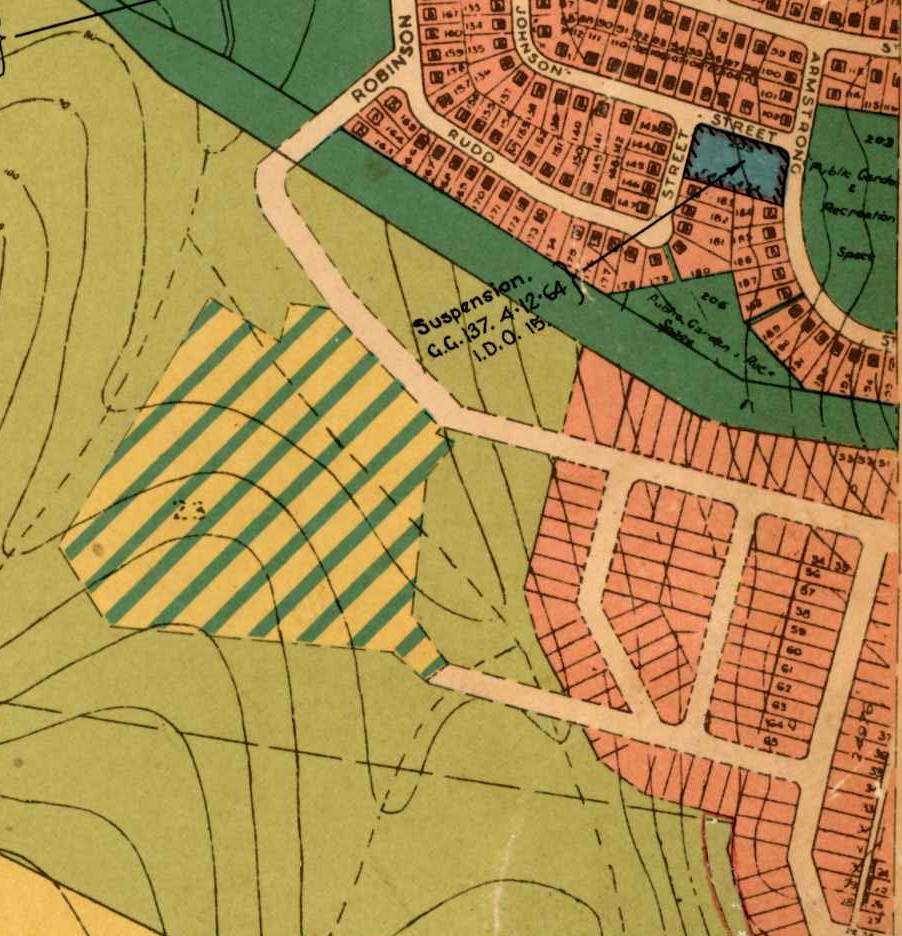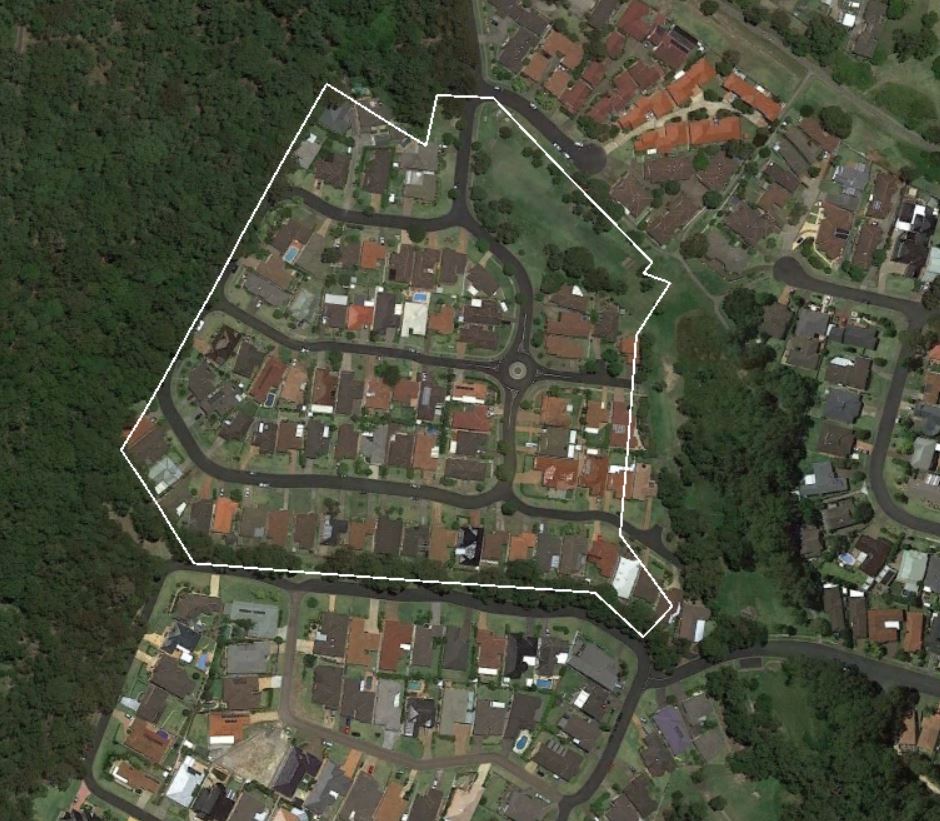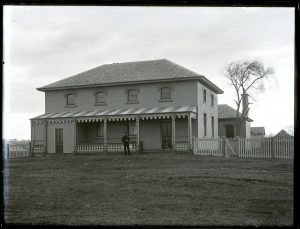Mike Scanlon in a Newcastle Herald article on 12 May 2017 has an interesting story on Bull’s Garden, an exotic pleasure garden established by Edmund Bull in Whitebridge around 1860. The gardens lasted about 70 years and were closed in the 1930s.
A 1911 map held by the National Library of Australia shows the location of Bull’s Garden, to the east of Bulls Garden Road. I have overlaid the map into Google Earth to identify the location in the current landscape. (KMZ file for Google Earth)

Update, August 2023
While browsing the Newcastle Library Hunter Photobank site, I came across a Ralph Snowball photograph titled simply “Bush scene”. After studying it for a while and noticing quite a number of landscaped elements such as rock walls, paths, bridges and steps, I realised that it was a photo of Bull’s Garden in Whitebridge.
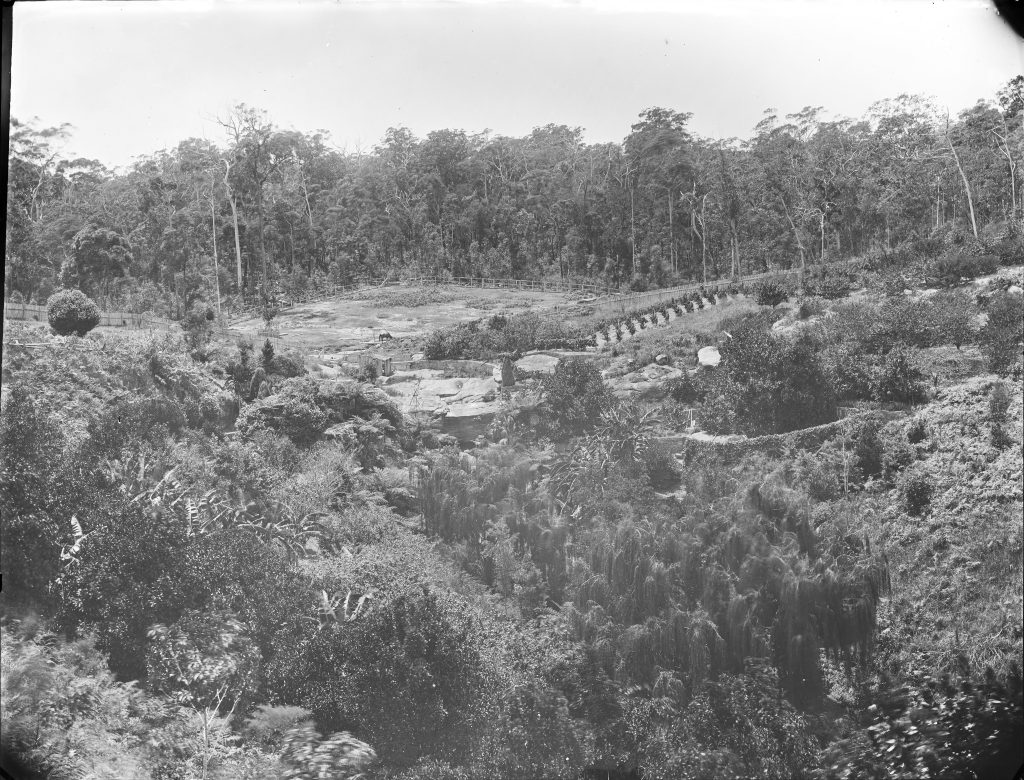
Comparing the central rocky creek bed and precipice from Snowball’s photo, with an aerial photo of 76 Bulls Garden Rd Whitebridge from the SIX maps site, confirms the location of the Snowball photo.
